There are plenty of amazing phones out there on the market, but not everyone has the money to splash out on a flagship handset. If you need something a lot cheaper, then here are the best budget phones you can buy right now.
Plenty of smartphone makers have extensive budget phone ranges and they offer more than you might expect, including the kinds of premium materials and impressive specs you could previously only dream of at low prices. Motorola has been making excellent budget phones for many years and you can also rely on the likes of Samsung and Xiaomi, as well as newer challenger brands like CMF by Nothing.
All of the devices featured on this list are Android phones since the cheapest Apple model is the £599/$599 iPhone 16e, which is essentially double our price cap here of £300/$300 (though many are a lot less).
Find our list of the 10 best budget phones below as vetted by our tech experts, followed by more buying advice. If you do have a bit more money to play around with then you might also be interested in the best mid-range phones, whilst anyone looking to really splurge will find flagship options in our current ranking of the best phones overall.
Black Friday budget phone deals
It’s November, so that means there are plenty of deals on cheap phones to be had. Now is the perfect time to upgrade, but with thousands of deals across all the retailers and official stores, it can be overwhelming. Don’t worry, though, we have done the hard work for you and found the best offers and prices on budget phones this Black Friday.
These may include mid-range phones that are now available at budget prices – and most of the deals are available into December. See more deals on phones and accessories.
- CMF Phone 2 Pro – £179 (£40 off)*
- Samsung Galaxy A17 5G – £169 (£30 off)*
- Motorola Moto G86 5G – £195.95 (30% off)*
- Nothing Phone (3a) – £274 (£55 off)*
- Samsung Galaxy A26 – £209 (30% off)*
*Lowest price ever seen
Best budget phone reviews
1. CMF Phone 2 Pro – Best Overall

Pros
- Better cameras, and more of them
- Brighter, more accurate display
- NFC payment support
- Very affordable
Cons
- Only IP54 rated
- Essential Space might cost you in the future
- Longer software support elsewhere
The CMF Phone 2 Pro doubles down on everything we loved about its predecessor. It still has a bold and unique design with modular bolt-on accessories, and it still has Nothing’s stylish and bloat-free software installed.
The new model also brings some big upgrades: You now get a triple camera setup on the rear with a larger main sensor, the display is much better, it has a higher IP54 rating, and it’s slightly quicker, thanks to an upgraded chip.
The biggest downsides to the original CMF Phone have been addressed, too. It now offers NFC for contactless payments, and the software support has been extended to cover three years of Android OS upgrades and six years of security patches. If that wasn’t enough, the rear panels have updated finishes to create a more premium look and feel, but you can’t swap them this time, so choose wisely.
The original was already our favourite budget phone, and these upgrades make it more tempting than ever. Of course, you’ll have to be onboard with the unusual looks (including software), but if you are, this is a package that’s hard to beat for just £219.
In the US, it’s not such a great deal where you have to buy the more expensive $279 model via the Beta Program with possible issues with US carriers, no customer support and none of the optional accessories.
Those still interested in the CMF Phone 1 may be able to get even more of a bargain with reduced prices at various retailers.
Who should buy the CMF Phone 2 Pro?
Anyone who appreciates style and modularity on a smartphone.
CMF Phone 2 Pro: Further considerations
Samsung vastly outpaces Nothing right now when it comes to long-term software support.
Read our full CMF Phone 2 Pro review
2. Samsung Galaxy A17 5G – Best Samsung
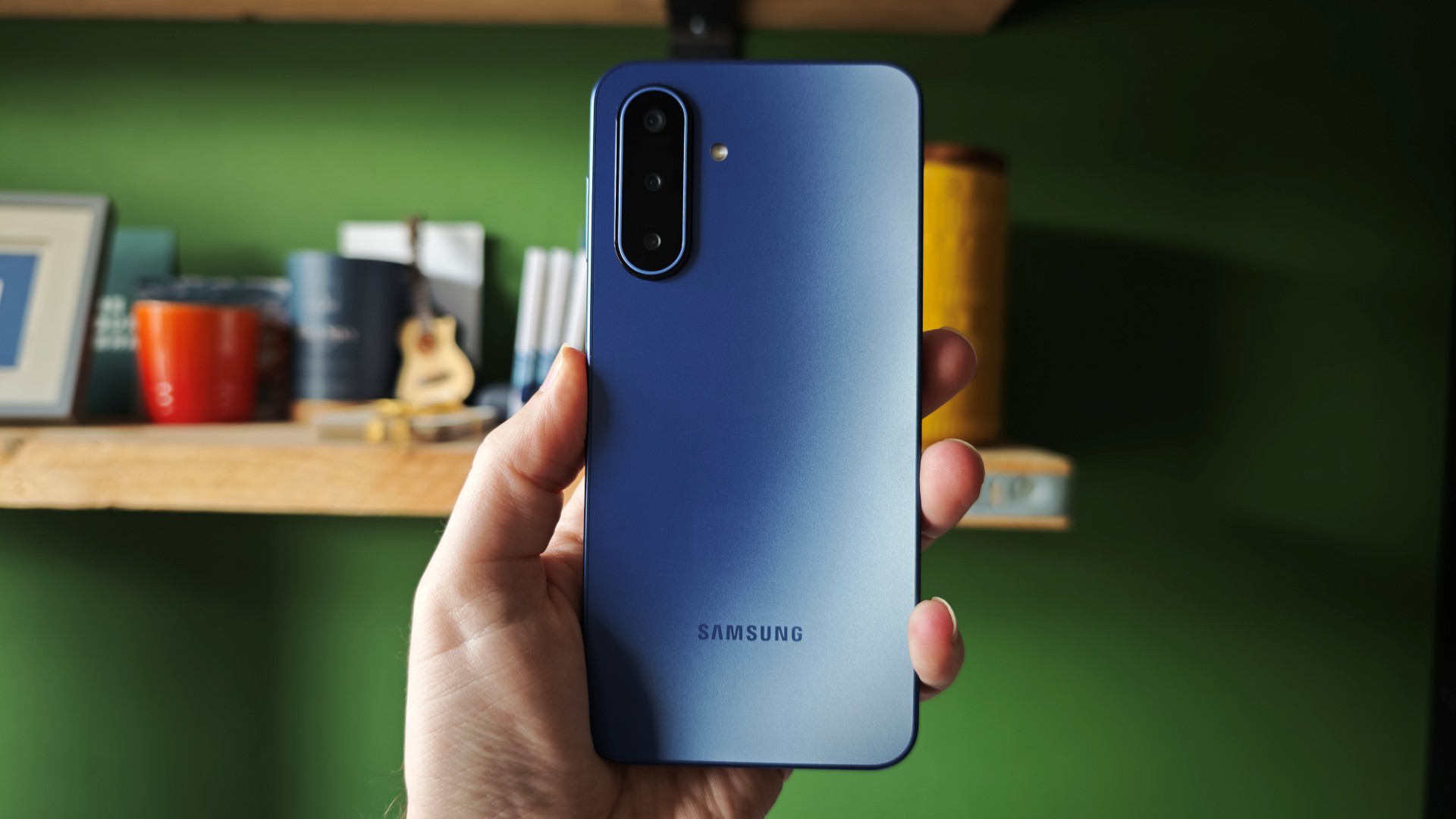
Pros
- Sleek design
- Long software support
- Large, punchy screen
- Slick user interface
Cons
- Almost identical to A16 5G
- Lacklustre secondary cameras
- No eSIM
At this point, no one can really doubt Samsung’s ability to make solid budget phones that tick all the right boxes, but it’s arguably finessed that skill to a fault. Case in point, there’s very little to separate the Samsung Galaxy A17 from its predecessor, but when viewed from outside of that lineage, it stands as a great budget pick in its own right.
Apart from some subtle design tweaks, the main upgrade is the addition of optical image stabilisation (OIS) to the main camera for slightly better results. You also get Samsung’s rather slick UI, which stands apart from what you typically find at the budget end of the market.
As per usual, the Galaxy A17 also goes above and beyond when it comes to long-term software support. Anyone who picks up the phone can enjoy six years of updates from the time of launch which just goes even further to helping consumers maximise the value of their purchase, and it’s exactly why Samsung handsets are the go-to pick for anyone looking to buy a phone for the long term.
There is a case to be made that with the A16 5G being phased out, you could easily pick it up with a significant discount attached, and there’s nothing wrong with that if you want to stick to a tight budget. However, the slight added expense to get an extra year of software support with the A17 is a fair trade-off, especially as it will be regularly discounted itself.
Note there’s also a Galaxy A17 4G model which is almost identical but cheaper and, of course, without 5G connectivity if that’s not a necessity.
Who should buy the Samsung Galaxy A17?
Value-first buyers who want a device that’s supported well into the future.
Samsung Galaxy A17: Further considerations
The Galaxy A16 is near identical and may be found for less and the CMF has better hardware.
Read our full Samsung Galaxy A17 5G review
3. OnePlus Nord CE 5 – Best for AI
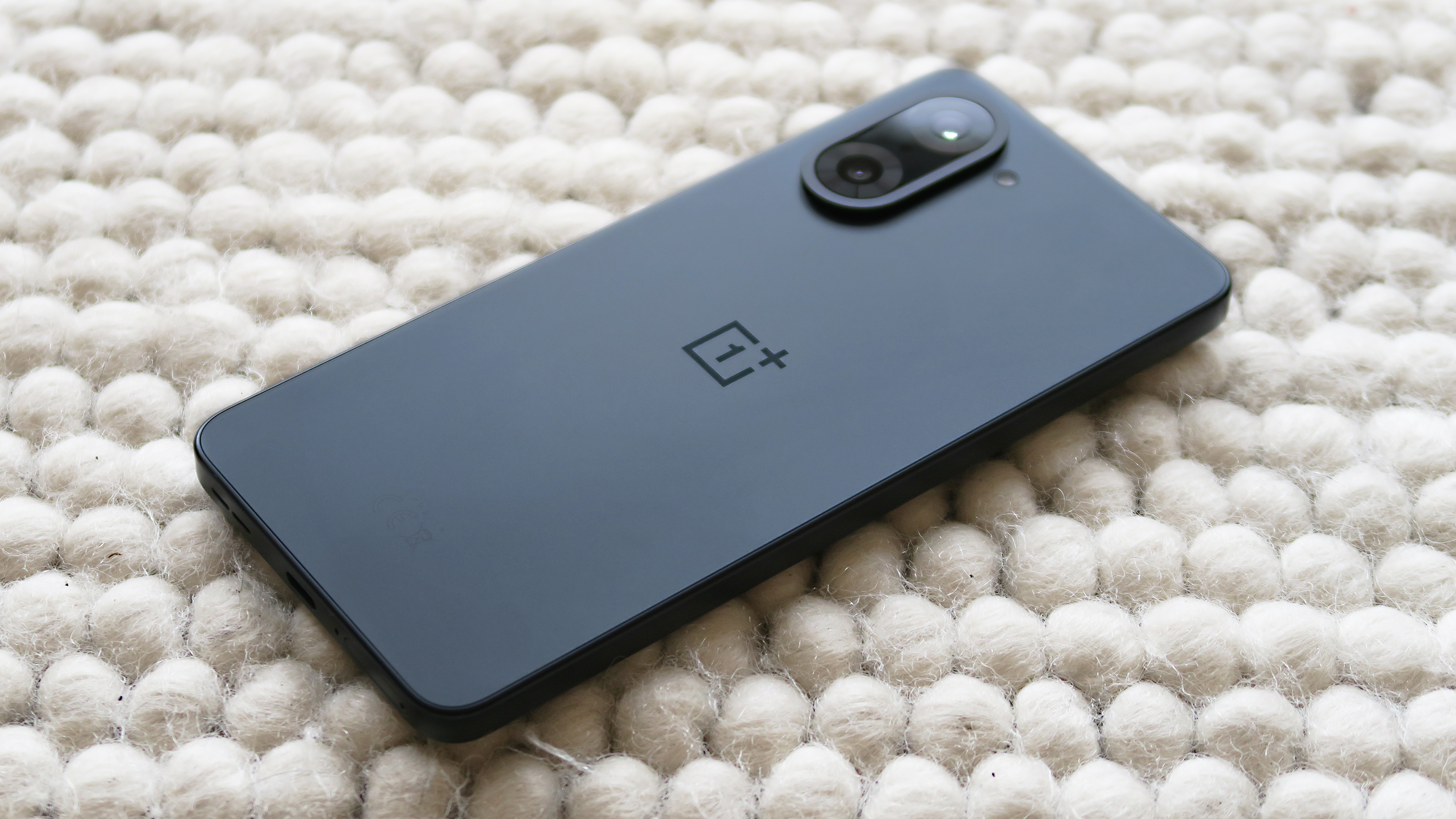
Pros
- Nice design and build quality
- Rich, elegant user experience
- Fast charging
Cons
- Disappointing loudspeaker and haptics
- Rivals offer better value performance
- Cameras struggle in low light
OnePlus has really helped to raise the bar amongst budget phones in the last few years but if you still haven’t been convinced by the company’s efforts then the OnePlus Nord CE 5 should set you straight. This is one of those rare phones that genuinely feels completely at odds with its budget price tag.
While the design might be a little on the reserved side, there’s no denying that the Nord CE 5 has a confident look to it, and the use of an all-black polycarbonate frame and composite back do an excellent job of making you think that this is actually a phone that belongs at the premium end of the scale. Having IP65 dust and water resistance doesn’t hurt either.
There’s a bright and responsive 6.77-inch 120Hz AMOLED display on this phone that’s easy to use outdoors and ideal for kicking back with some entertainment at the end of a long day. Even though OnePlus has opted for the MediaTek Dimensity 8350 Apex as opposed to any chipset from Snapdragon, performance is still great, and we encountered no issues when playing titles like Call of Duty Mobile.
Under the hood is a sizeable 5200mAh battery which can easily get you to the end of a long day without any anxiety. What’s more impressive is the 80W wired fast charging that’s available here, allowing users to power up a full battery in just under 50 minutes.
Who should buy the OnePlus Nord CE 5?
People who appreciate a budget phone that looks like a more premium device.
OnePlus Nord CE 5: Further considerations
The lacklustre loudspeaker prevents the phone from being a great option for streaming.
Read our full OnePlus Nord CE 5 review
4. Samsung Galaxy A25 5G – Best Cameras
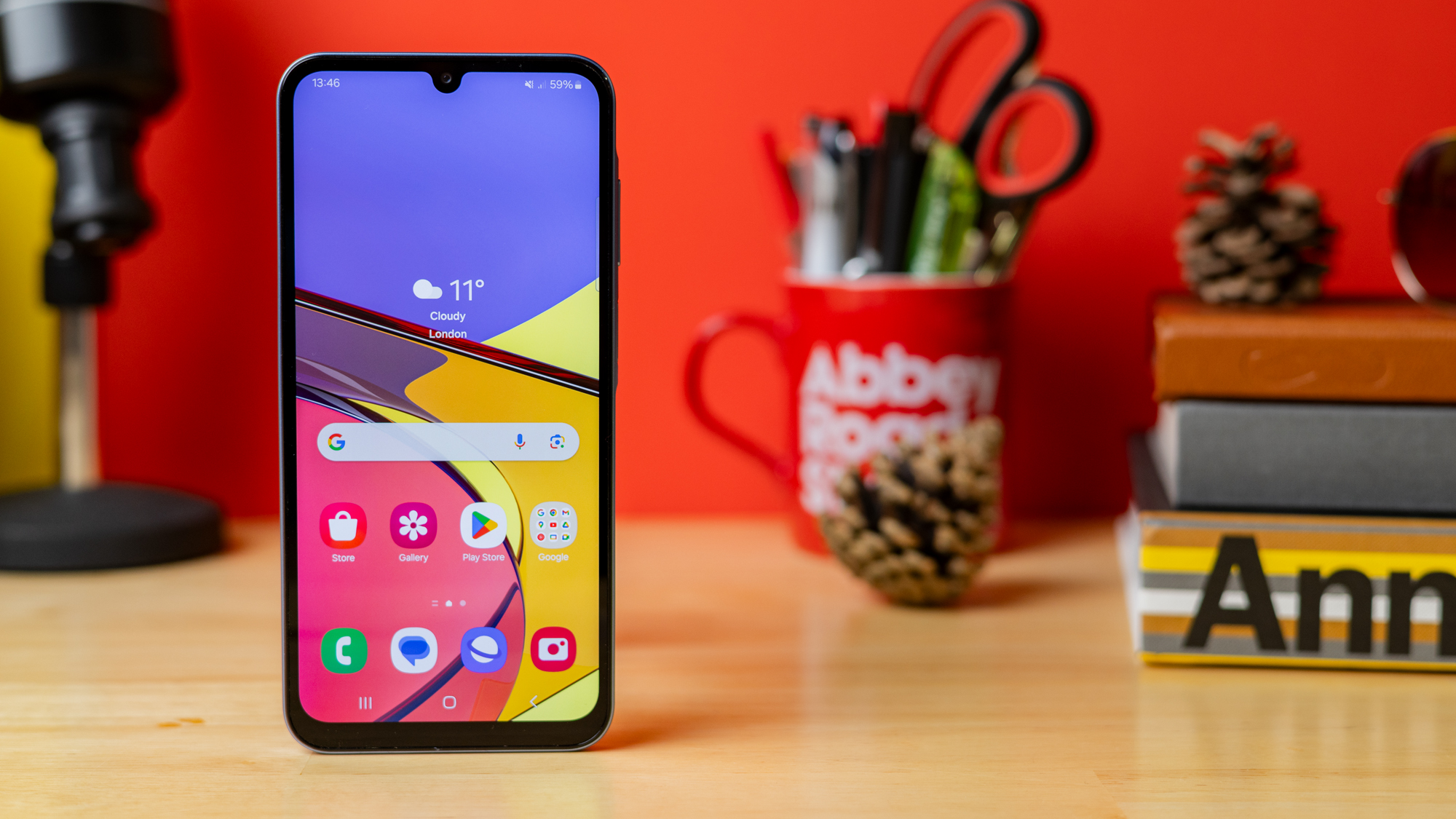
Pros
- Excellent screen
- Long software support
- Solid battery life
- Decent camera performance
Cons
- Not the most durable
- Only 128GB storage
- Divisive rear design
Given how good the Galaxy A15 5G is, why would you pay extra for the A25 5G? There are a few reasons, especially as it still costs under £250/$250. A shift to Samsung’s Exynos 1280 chipset boosts performance, while the display is even more impressive with a 120Hz refresh rate. You also get an improved 8Mp ultrawide camera and stereo speakers.
Throw in the already-solid battery life, decent main and selfie cameras and those five years of updates and you’re on to a winner.
The only real reasons not to buy the A25 5G are the limited storage options and a design that won’t be to everyone’s tastes. Or if one of the other phones in this list appeals to you more.
Who should buy the Samsung Galaxy A25?
In spite of a successor, this is a phone that’s great for those who want a solid experience across the board.
Samsung Galaxy A25: Further considerations
Unfortunately, the A25 isn’t the most durable phone on this list so you’re better looking elsewhere if you regularly drop your handset.
Read our full Samsung Galaxy A25 5G review
5. Motorola Moto G85 5G – Best Display

Pros
- Gorgeous curved-edge pOLED display
- Slim and lightweight design
- Reliable battery life
- Impressive fast charging
Cons
- Mediocre camera performance
- Middling software support
- Performance falls short of similarly priced rivals
It’s hard to tell at first glance that the Motorola Moto G85 5G is actually a budget phone, given just how luxurious the backing feels. The Cobalt Blue version that we had in for testing most certainly held our attention, which is impressive against a sea of phones that have overlooked their aesthetic in favour of upgraded specs.
This isn’t to say that Motorola has spent all its time focusing on the design, far from it. Flip the phone over and you’ll be greeted by a gorgeous 6.67-inch 120Hz pOLED display, which is great for everything from scrolling through social media to streaming the latest exclusives on Netflix.
The performance offered by the Snapdragon 6s Gen 3 chipset is solid enough for everyday use, although it does start to trip up if you want to play any 3D games on the phone, so you’re better off looking elsewhere for a budget gaming experience. Thankfully, Motorola’s take on Android is wonderfully uncluttered and easy to use.
What ties it all together is a massive 5000mAh battery which, under the right circumstances, can keep up with you for about a day and a half on a single charge. There’s also 30W wired charging, which can get you back from 0% to 50% in just 30 minutes. The only reason why you wouldn’t want this phone is for better camera performance, but for everything else, it’s a great option.
Who should buy the Motorola Moto G85 5G?
Folks who need a great screen so they can enjoy a colourful everyday experience.
Motorola Moto G85 5G: Further considerations
The cameras don’t quite stand up to the high bar set by the display and the design.
Read our full Motorola Moto G85 5G review
6. Motorola Moto G04 – Best Under £100
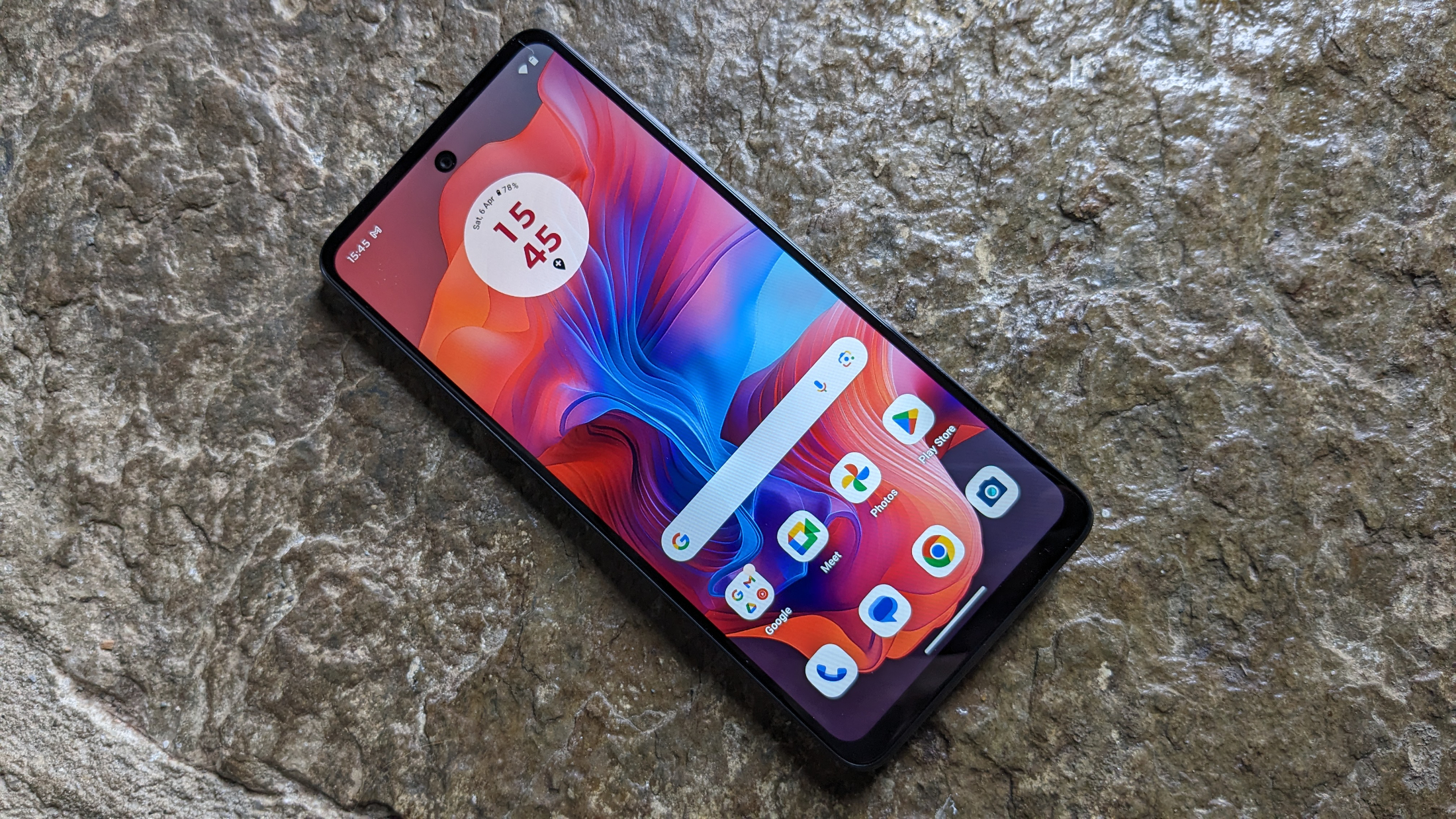
Pros
- Amazing value for money
- Fantastic battery life
- Decent performance
- Great at the basics
Cons
- Not waterproof
- No 5G
- Limited brightness
- Not available in the US
Can you really get a good phone for under £100? As it turns out, the answer is yes, and the phone to get is Motorola’s Moto G04.
It costs just £89.99 in the UK (sadly not available in the US), yet still delivers all the fundamentals of a great smartphone. Performance is absolutely fine for the basics, and the display delivers a decent viewing experience, albeit with limited brightness.
Battery life is a real highlight, with two full days of everything except heavy usage. And the Motorola software is reassuringly familiar, even if it only gets two years of security updates.
There’s no 5G support or official water resistance rating and the cameras aren’t great, but these can easily be excused at this price. The Moto G04 still offers incredible value for money.
While we have yet to review the newer Moto G05, as a result of its appearance on the market, the G04 can now be picked up cheaper than ever, making it even more of a bargain.
Who should buy the Motorola Moto G04?
If you’re tied to a very strict budget, you simply won’t find a better phone for the price.
Motorola Moto G04: Further considerations
The lack of 5G prevents this phone from being a viable long-term option.
Read our full Motorola Moto G04 review
7. Motorola Moto G56 – Best Battery Life
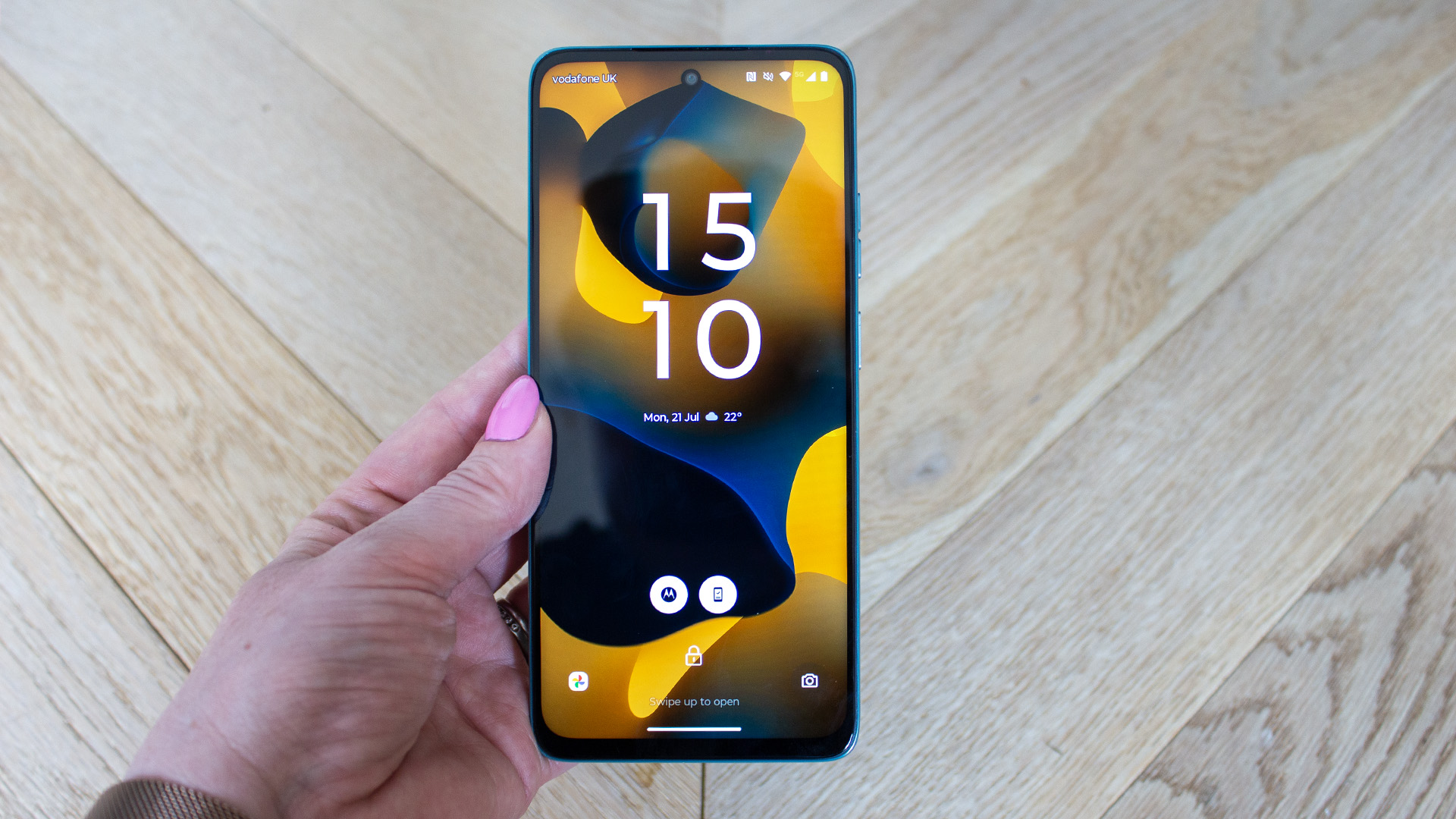
Pros
- Lovely design and finish
- Great battery life
- Clean software experience
Cons
- Only 2 years of Android updates
- Some lag in performance
- No 4K video recording
The Moto G56 is a great budget phone if you want long battery life. We were hammering it and still ending most days with 40-50% battery remaining making it a solid 2-day phone.
There’s plenty more to like, too, as Motorola continues its trend of recognisable design, in a range of colours, which you don’t have to put a case on. The phone might have a plastic frame but it’s still IP69 dust and waterproof and there’s even a headphone jack and microSD card slot – remember those?
The good new continues with a nice big screen, solid main camera and speedy wired charging. You couldn’t ask for much more at this price.
Longer software support would be nice, that’s for sure and the performance isn’t the smoothest if you’re a more demanding user. Otherwise, the Moto G56 5G is a great budget all-rounder.
Who should buy the Motorola Moto G56 5G?
You want long battery life with other key boxes ticked as well.
Motorola Moto G56 5G: Further considerations
Look elsewhere for longer software support and more impressive performance.
Read our full Motorola Moto G56 5G review
8. Samsung Galaxy A16 5G – Best Samsung Alternative
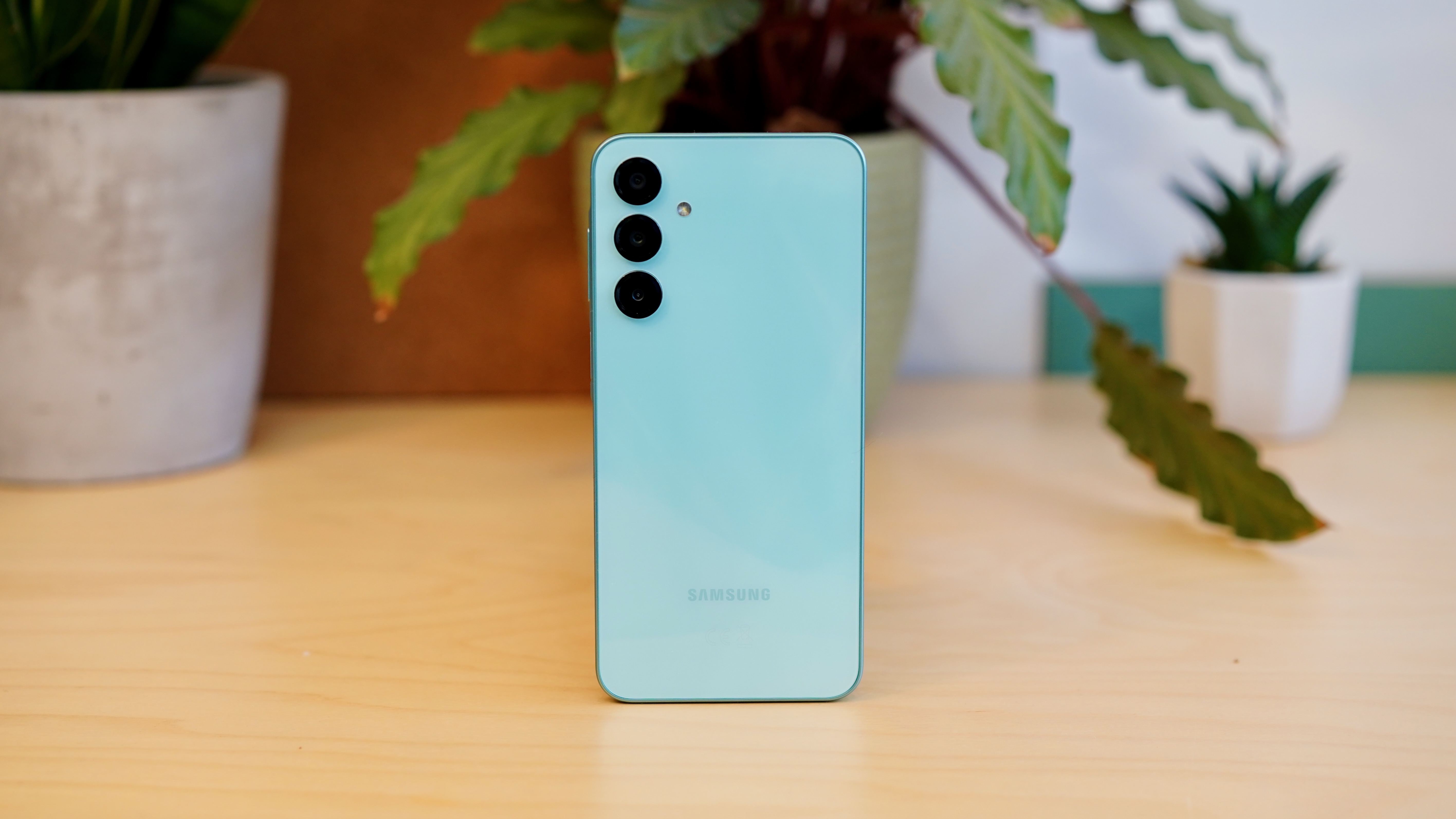
Pros
- Clean, appealing design
- Punchy AMOLED display
- Impressive software update promise
Cons
- Limited performance
- Battery life downgrade
- Poor secondary cameras
The Samsung Galaxy A16 5G is another solid, cheap phone from Samsung, offering an appealing design and a punchy AMOLED display for a very affordable price.
You’ll likely find Samsung’s design more appealing than many rivals of a similar price and a more hidden advantage, and a big one, is the long software support the firm promises – no less than six years of updates, where many budget phones just get two, or no exact promise at all.
Samsung’s user interface is a plus here as well as a big and colourful screen. Just don’t expect all that much from performance or the ultrawide and macro cameras.
The phone has now been replaced by the Galaxy A17 5G which is nearly identical but the main camera gets OIS and you’ll get a year longer software support since this is old model but that also means you might find it at a temptingly reduced price.
Who should buy the Samsung Galaxy A16 5G?
Those who value long-term software support and appealing design.
Samsung Galaxy A16 5G: Further considerations
Now succeeded by the A17 5G.
Read our full Samsung Galaxy A16 5G review
9. TCL 50 Pro Nxtpaper – Best for Readers
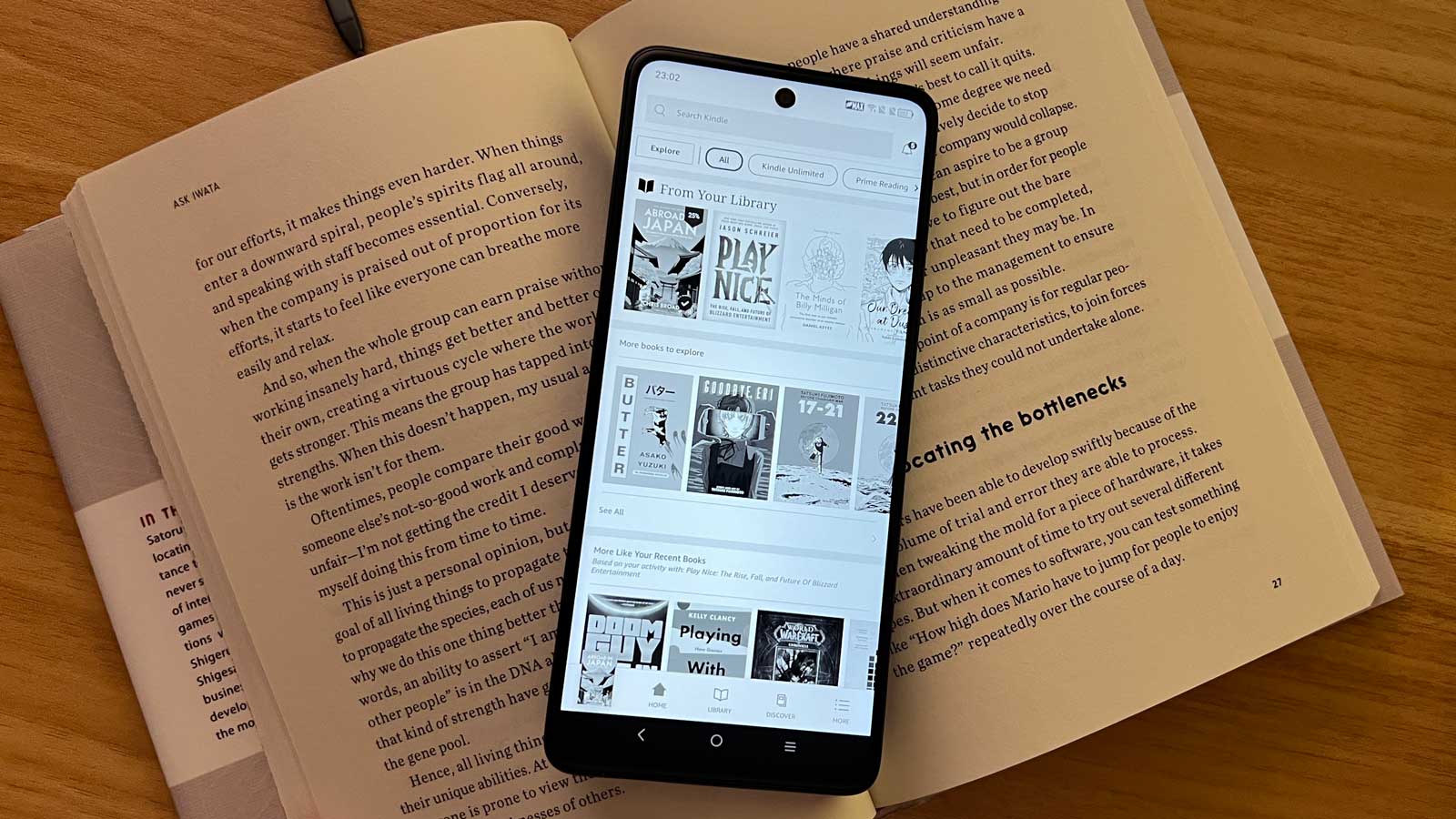
Pros
- High-quality display
- Impressive E-Ink style modes
- Fantastic battery life
- Impressive specs
Cons
- Disappointing cameras
- Underwhelming speakers
- Extra pre-installed apps
The 50 Pro Nxtpaper is a phone with a difference.
In addition to the usual colour display you’ll get on any smartphone (albeit a nice matt version here), TCL allows you to switch to E-Ink style mode at the flick of a switch. This is transformative for eye health and readability, even if it can’t replace a dedicated eReader for most people.
Crucially, the display still offers a good colour experience, including while watching movies. And the battery life is excellent, regardless of the mode you’re using.
It’s not as impressive in all areas, with cameras and speaker quality both in need of work. Extra bloatware also makes the otherwise enjoyable software more frustrating to use.
But if you read a lot on your phone and are looking for a budget phone that fits the bill, the TCL 50 Pro Nxtpaper is the device for you.
Who should buy the TCL 50 Pro Nxtpaper?
Avid readers who enjoy accessing their Kindle books from their smartphone.
TCL 50 Pro Nxtpaper: Further considerations
Doesn’t really compare to most budget phones on this list where cameras are concerned.
Read our full TCL 50 Pro Nxtpaper review
10. Xiaomi Redmi Note 14 Pro 5G – Best Hardware
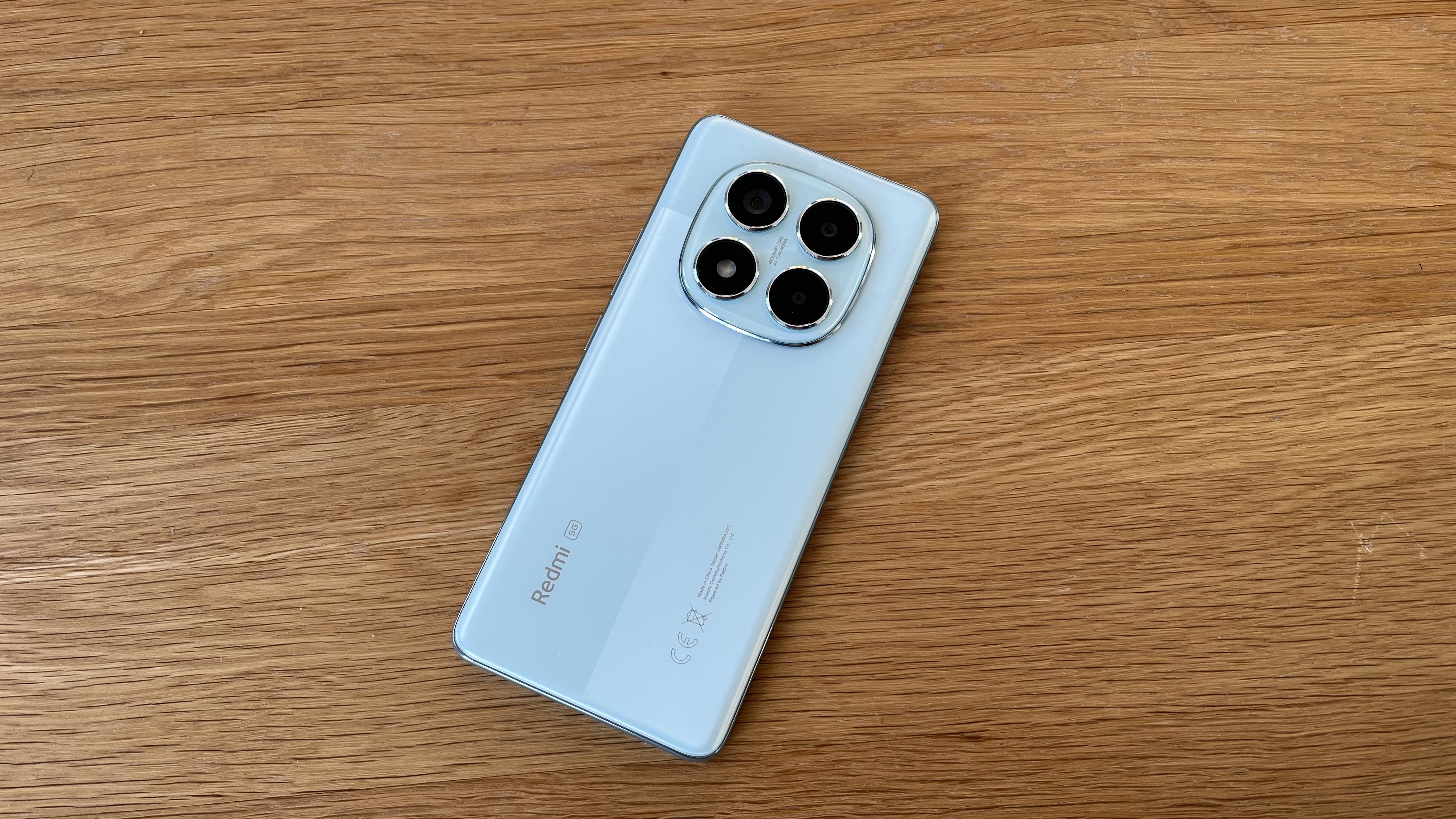
Pros
- Sharp 6.67in display with 120Hz refresh rate
- Good battery life & charging
- Lightweight & durable design
- Solid main camera
Cons
- Mediocre secondary cameras
- Divisive software UI
- At the pricey end
Anyone with a Note 13 Pro needn’t upgrade but this doesn’t alter the fact that the Redmi Note 14 Pro 5G is one of the best budget phones you can buy if you’re looking at the top end of this price bracket and value hardware specs the most.
The screen is excellent for the price, while its battery and charging capabilities are also impressive. Then there’s its capable main rear camera and solid performance.
Downsides, aside from the classic budget phone issue of poor secondary cameras, are that the software experience is behind most rivals.
It comes recommended but you should check out various cheaper rivals from the likes of Samsung, CMF and Motorola, as well as the non-pro Note 13 above which is now cheaper, before taking the plunge.
Who should buy the Xiaomi Redmi Note 14 Pro 5G?
Anyone who needs a long-lasting battery to get them through a heavy day’s worth of use.
Xiaomi Redmi Note 14 Pro 5G: Further considerations
For a better value buy you’re better off checking out a CMF or Motorola phone.
Read our full Xiaomi Redmi Note 14 Pro 5G review
Other budget phones tested
The phones featured in this list are just a small example of the total amount of budget-friendly handsets that we review. This isn’t to say that there aren’t great affordable phones to be found outside of the ones recommended here, but for the sake of your time and saving you from endlessly comparing specs and features, these are the ones that are worth knowing about above all else.
For instance, the Nokia G42 5G, which doesn’t feature here, is still a great option for those who prioritise repairability in their daily driver above all else. More recently, the Poco M7 Pro (below) just missed out on making the cut but with a massive battery and a low price tag of only £199, there’s a good chance that it’ll appeal to someone, but not the masses.
We also recently removed the Samsung Galaxy A15 (4G) now that it is two generations old. However, it’s not uncommon now for the A15 to be sold for a significantly cheaper price compared to what it originally went for at launch, and it’ll still be supported until the end of 2026, so it could suit if you just need a dirt-cheap Samsung for a short time.
Of course, while you can check out our recommendations for the best mid-range phones if your budget stretches up to £700/$700, those who are willing to pay just a tiny bit more than the £300/$300 cap placed on phones within this list will also find even more options available to them.
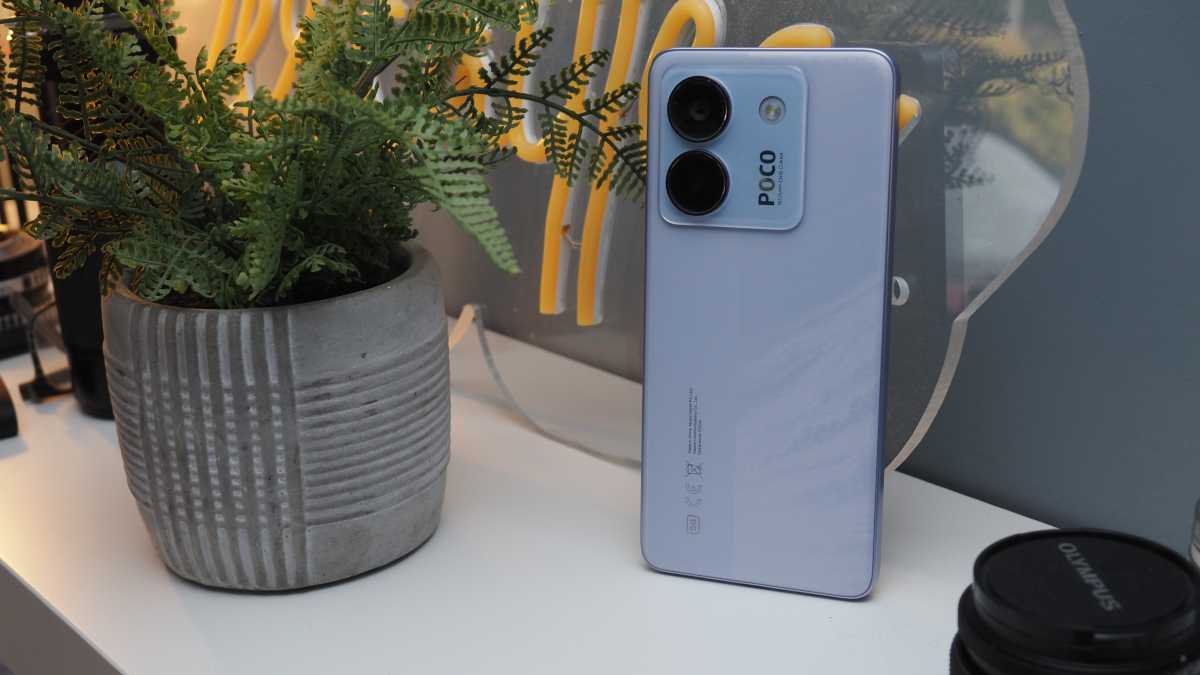
Sean Cameron/ Foundry
Just take the excellent Nothing Phone (3a) which, at £329, is just slightly more expensive than what we consider to be the core range of budget phones, but for that extra bit of cash you’ll get a jaw-dropping design, some of the best Android software at this end of the market, and great battery life to boot.
The Poco X7 Pro isn’t too far behind either, with a price tag of just £309 and a design that some people might find preferable to the Nothing Phone (3a). Be sure to check our latest phone reviews to see if there’s anything else out there that might take your fancy.
Budget phone news that could affect your buying decision
Seemingly out of nowhere, Nothing surprised us all by unveiling one more phone for 2025 in the form of the Nothing Phone (3a) Lite. At £249, this new phone fits perfectly in the bracket for consideration of the best budget phones, but whether or not it gets anywhere near our list depends on how it performs in our testing once we get our hands on a review unit.
Once our review has been published, this page will be updated either way to let you know where Nothing’s new budget phone stands against the competition, so if you’re a die-hard fan of the brand then you may want to hold off for the time being.
On a similar note, the Xiaomi Redmi 15 is another recent addition to the market that we’re looking to review in the near future. Given that this phone has a 7000mAh battery inside, it could end up being one of the leading options where longevity is concerned, so if that is the main feature that interests you when it comes to choosing an upgrade, stay tuned for our upcoming verdict.
Neither Apple nor Google have a phone that comes anywhere near the sub-£300 limit of our best budget phones, with the cheapest offering being the £599/$599 iPhone 16e and the £499/$499 Pixel 9a (below), respectively.
This means that if you have an affinity for iOS or Google’s stock Android, then you’ll have to expand your budget to either buy at the mid-range level or at the more premium end where the best phones tend to sit, or look for an older generation which has been reduced.
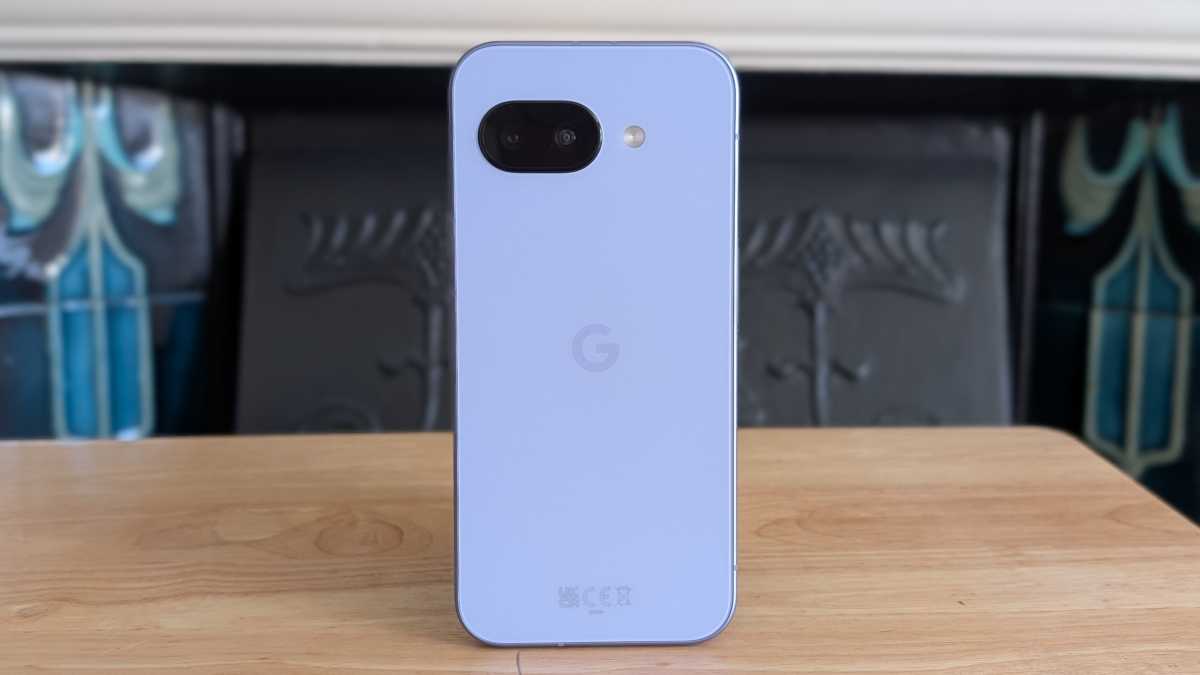
Anyron Copeman / Foundry
Can I get a better budget phone deal?
Because of the automated nature of our deals widgets which appear alongside each entry in this list, you’ll always see the cheapest prices available on any given day, so you can rest assured that you’re getting a bargain. However, if you do want to save even more, then you can during the major sales events of the year.
With both Amazon Prime Day events all done for 2025, the next big sale is Black Friday on 28 November (but deals are live throughout the month).
With Black Friday not being limited to just one retailer, you don’t have to be signed up to Amazon Prime, and it gives you more freedom to shop around for the best price. All the major retailers get involved, including Currys, John Lewis and AO in the UK and the likes of Best Buy and Walmart in the US, and they constantly try to outdo one another by reducing prices in an effort to attract your patronage.
Alternatively, if you don’t fancy waiting until any of these sales events, then you can bag a bigger bargain today by checking out our breakdown of the best refurbished phone deals. Refurbished phones are always available at a lower cost than buying a phone new, plus it’s a more eco-friendly practice as you’re saving a handset from ending up as e-waste.
How we test phones
The only way to properly test a phone is to use it as our own. So that’s exactly what we do, putting in our personal SIM and using the handset around the clock for at least a week, and very often longer. This in-depth testing tells us what it’s like to use the phone in the real world, from a user perspective, giving us insight into all features from the camera through to battery life. We pair this hands-on knowledge with traditional benchmarks to ensure we have comparable scores.
Read more about how we test smartphones.
Why you should trust Tech Advisor for phone reviews and buying advice
Smartphones have been a core part of Tech Advisor’s coverage since the first iPhone was released in 2007 and Android made headlines in 2008. Since then, we’ve been guiding you through the fascinating and fast-paced rise of modern mobile phones, including the launch of 5G and the comings and goings of Windows Phone, Blackberry and brands like LG. We are testing new phones on a weekly basis and reviewing just about every model that comes to market. Our expert in-house team and contributors have many decades of combined experience.
Who curated this article?
Chris Martin is the Managing Editor at Tech Advisor and one of the most senior members of the team. Having written for the site for well over a decade after being a reporter at The Inquirer, he’s tested countless handsets and seen styles, operating systems and even brands come and go. Chris has more context than most on how phones have changed over the years, the best features to look out for and how the latest handsets compare to the competition.
How to choose the best budget phone
Unlike shopping at the premium or even mid-range sector of the market, buying a budget phone in 2025 comes with a different set of expectations. While you can get some high-end features on affordable handsets, their presence does tend to come at the expense of other facets. With that in mind, it’s worth deciding ahead of time which features you prioritise the most before buying.
For example, you can get amazing displays like with the Moto G85 or the Redmi Note 14 Pro, but that might come at the cost of battery life or software experience, so it’s a case of weighing up the compromises and deciding which type of give and take you’re happy with. Unfortunately, if that doesn’t sound appealing, then you will need to save up and opt for a mid-range phone instead.
Others might have great cameras or features you typically see in more expensive phones, like a good IP rating for dust and water resistance. The problem is you won’t find a budget phone that does it all.
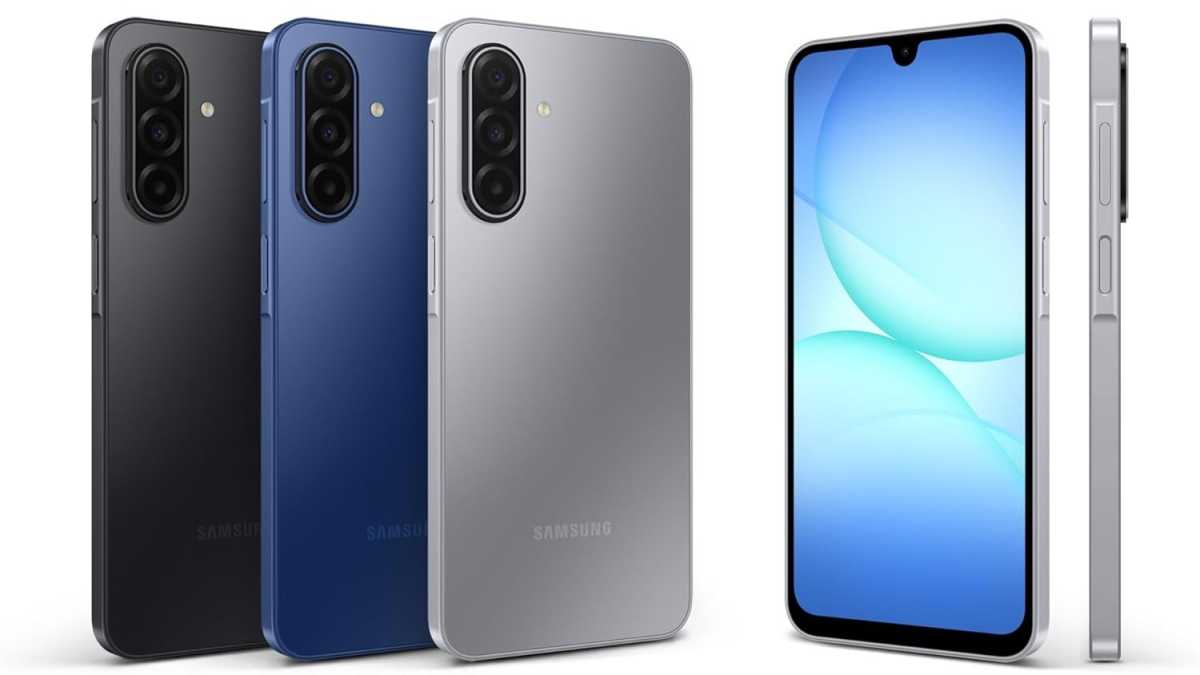
Samsung
It’s also worth considering long-term software and security support for the phone you intend to buy. This isn’t the type of thing you have to worry about at the premium end as there’s a higher standard across the board, but in the budget sector, some phones won’t be supported by the manufacturer for more than two years, which could lead to issues further down the road.
Companies like Samsung and Nothing do a better job at offering long-term support with their budget phones, which might be more appealing if you’re buying for a child or an elderly relative and you don’t plan on providing them with an upgrade for quite some time.
When it comes to contracts, we recommend buying the phone outright as a SIM-free device, and then picking up one of the best SIM-only deals separately. While this practice might sound a bit more laborious than getting everything together in one fell swoop, it will save you more money in the long run as you won’t have to worry about any mid-contract price rises. Plus, SIM-cards tend to be a lot cheaper (and offer more data for the price) when sold separately.
Budget phones buying advice
Should you buy a budget phone outright?
In our experience, the ideal way to get a cheap phone is to buy it SIM-free and then grab a great-value SIM deal. You won’t be paying loads every month for a phone for the next two years and you can swap it for a newer model whenever you fancy without a massive impact on your wallet.
Should you buy a locked phone?
You’ll quickly find that some of the best deals on cheap phones are sold via mobile operators (also known as carriers). What you need to watch out for is whether these phones are sold locked to that operator’s network.
All phones sold in the UK since December 2021 must be sold unlocked, but if you’re based somewhere like the US or importing a device, it may be locked.
In those situations, you won’t be able to put another operator’s SIM card into your carrier-locked handset and will likely have to call the device’s carrier to get the phone unlocked, which can cost money.
What’s the best phone for a child?
Most children want to make up their own minds about choosing a phone when entering young adulthood, but if they’re a little younger, you’ll probably want to decide for them.
You’ll want to look at something ultra-affordable for a first smartphone, so you’ve come to the right place. It’ll need to have a decent-sized screen, long battery life and be fairly durable, so you should probably avoid phones with a glass back.
As it’ll likely be your main point of contact with your child, you’ll also want to look for good call quality, something that’s often overlooked on modern phones.
Which phone is best for students?
We’d recommend a more affordable phone here too, but many of the options in this chart may be within reach.
General buying decisions should be whether you prefer a near-stock version of Android (as is available on Google’s Pixel phones, plus Nokia and Motorola phones), or don’t mind a heavier ‘skin’, as found on devices from Samsung, Xiaomi, or Oppo.
Also, considering what the most important aspect of a phone is to you is key, and how many compromises you’re willing to make in other areas. Many handsets at this price point will target one specific feature, meaning corners are inevitably cut elsewhere.
What will you get for your money?
If you’re looking for a cheap phone, you have to accept the fact that the manufacturer is going to make sacrifices to achieve that low price and you aren’t going to get the same performance, features or display quality as a phone costing two, three, or four times the price.
It used to be the case that budget phones were instantly recognisable by their low-resolution displays, meagre storage and chunky, plastic bodies, but things are improving in this area all the time. These days, for around £250/$250 or less, it’s quite possible to buy a phone with an AMOLED display, a slim body, and a main camera that takes pictures good enough for sharing.
Nearly all will support 4G connectivity, and some 5G, but features such as NFC, wireless charging and water resistance might be absent unless specifically stated.





